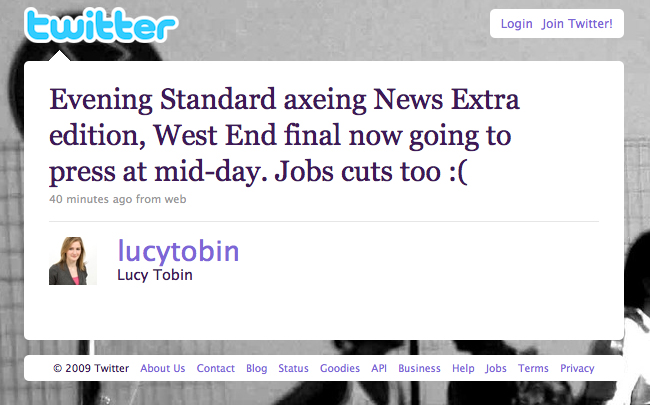Having set up a timeline dedicated to reporting on the sweeping job cuts affecting both senior and junior journalists alike, a trend is emerging for laid-off staff to use blogs, Twitter and other online sites and tools to capture their redundancy.
Reports such as Martin Gee’s set of Flickr images from his last day at the San Jose Mercury give a highly individual picture of how these cuts are being felt on a personal level beyond the redundancy figures and prediction stats.
In the summer, the Columbia Journalism Review started its ‘Parting Thoughts’ series, posting responses from journalists leaving the industry or facing redundancy.
At the Gannett Blog, former Gannett editor Jim Hopkins crowdsourced a blogpost of lay-offs by the publisher, listed by newspaper area – at time of writing redundancies at 72 of Gannett’s 85 US titles affected by the company’s latest round of job cuts were accounted for in Hopkins’ post.
In an open blog post last week, Ryan Carson, co-founder of web application design and events agency Carsonified, used the company’s blog to share his thoughts about staff cuts and give the reasons for making them.
Carson went on to give tips for companies looking to recession-proof their business (points that some commenters on the post argue are common sense no matter what the economic situation).
The Spokesman-Review has used its Daily Briefing blog to cover staff leaving in an equally personal and open way. News of senior staff exiting the paper, such as editor Steve Smith and assistant managing editor Carla Savalli, was broken on the blog and posts have also been penned by outgoing journalists, including Thuy Dzuong:
“Folks, it’s been fun but The layoff list for non-managers has been finalized, and I’m on it.”
Last week Silicon Alley Insider built a ‘real time’-style page to cover lay-offs at parent company Yahoo, updating it as new info came in.
(UPDATE – The Rocky Mountain News has launched iwantmyrocky.com to canvas support for the newspaper)
Despite the sad circumstances, the way in which journalists and media workers are facing redundancy in these examples shows a real engagement with online tools. A personal picture of what is happening to the industry is being documented for future reference by these staff members expressing themselves so openly (and perhaps significantly being ‘allowed’ to express themselves by their past/present employers).
What is more, while they may not hold the answers to the problems currently faced by the media industry, they shed light on how these issues are perceived and felt on the frontline. Something which employers should read and learn from.
